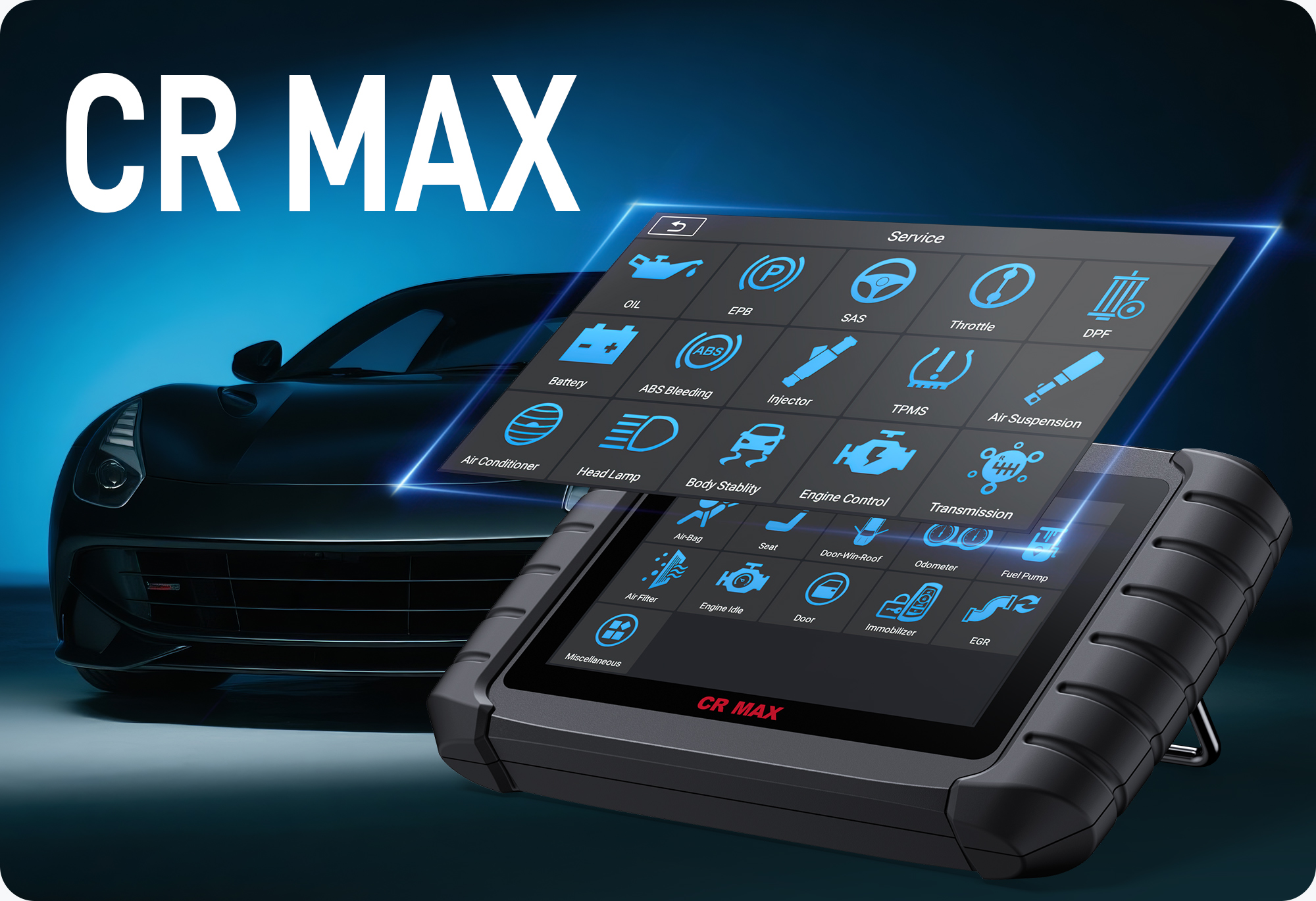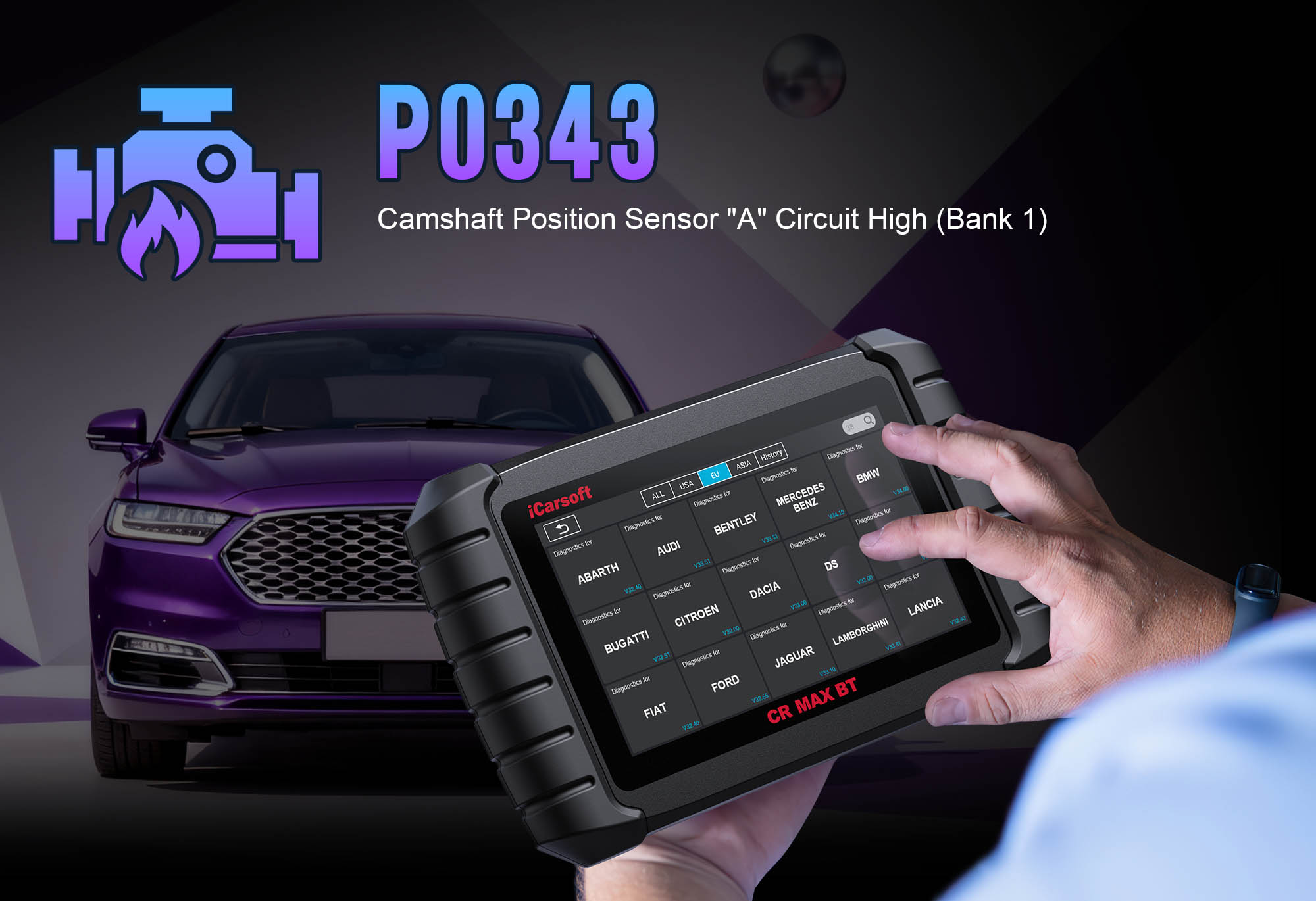How to Diagnose & Clear P0237 with iCarsoft CR MAX: Fix Turbo Boost Sensor Low Circuit Faults
If you drive a turbocharged vehicle and see the check engine light pop on, a scan revealing P0237—"Turbocharger/Supercharger Boost Sensor ‘A’ Circuit Low"—is a red flag for your engine’s performance. This code means the Engine Control Module (ECM) is detecting voltage from the boost pressure sensor (often integrated with the Manifold Absolute Pressure, or MAP, sensor) that’s below the manufacturer’s acceptable range (typically <0.5V).
Left unaddressed, P0237 can lead to frustrating power loss, turbo lag, and even long-term turbo damage—all issues that basic code readers struggle to resolve fully. Enter the iCarsoft CR MAX: a professional-grade diagnostic tool built to tackle turbo system complexities. Unlike entry-level scanners that only “read” P0237, the CR MAX dives deep into real-time data, tests components actively, and provides vehicle-specific guidance to pinpoint the root cause—whether it’s a faulty sensor, boost leak, or stuck wastegate. Let’s walk through how to use this tool to diagnose and clear P0237 for good.
First: Understand P0237—What It Is & Why It Matters
Before grabbing the CR MAX, break down the basics to avoid misdiagnosis:
The Boost Pressure Sensor’s Role
Mounted on the intake manifold (post-turbo), this sensor measures compressed air pressure entering the engine. It sends voltage signals (0.5V–4.5V, tied to pressure levels) to the ECM, which adjusts fuel injection and wastegate operation to maintain optimal boost (e.g., 10–22 psi for factory turbos).
What Triggers P0237
When the ECM detects sensor voltage below the minimum threshold, it assumes the engine is getting less boost than needed (or the sensor is faulty). To protect the turbo, it often activates “limp mode”—limiting power to prevent overheating or strain.
Key Symptoms You’ll Notice
Severe Power Loss
Lack of acceleration, especially at high RPM (turbo can’t build enough pressure).
Worsened Turbo Lag
Delayed response when pressing the accelerator (longer than usual to feel boost).
Reduced Power Warning
Dashboard alert paired with the check engine light (ECM activates limp mode).
Increased Fuel Consumption
Engine runs rich to compensate for low boost, lowering MPG by 10–15%.
Unusual Noises
Whistling (boost leaks) or grinding (stressed turbo components).
Common Causes of P0237
-
Faulty Boost Pressure Sensor (Most Common): Internal electrical failure leads to weak/no voltage signals.
-
Boost Leaks: Cracked hoses, loose clamps, or failed intercooler gaskets let compressed air escape—lowering pressure.
-
Damaged Wiring/Corroded Connectors: Frayed wires or rusted pins disrupt voltage flow in the sensor circuit.
-
Stuck-Open Wastegate: Wastegate fails to close, preventing the turbo from building pressure.
-
Clogged Air Intake: Dirty air filter or blocked intake pipe restricts airflow, reducing turbo efficiency.
-
ECM Malfunction (Rare): ECM’s sensor driver circuit fails, unable to process the sensor’s signal.
Why iCarsoft CR MAX Is the Best Tool for P0237
Basic scanners only confirm “low sensor voltage”—they can’t distinguish between real boost issues and faulty sensors. The CR MAX solves this with turbo-specific features:
Real-Time Boost vs. Target Monitoring
Tracks actual boost (psi/kPa) against ECM target boost—reveals if low pressure is real or a sensor fault.
Waveform Analysis
Visualizes sensor voltage signals to spot irregularities (flatlines, spikes) indicating a failing sensor.
Bi-Directional Wastegate Control
Manually opens/closes electronic wastegates to test for sticking—rules out mechanical turbo issues.
Boost Leak Detection
Analyzes pressure decay rates to find hidden leaks; provides vehicle-specific leak location guides.
Advanced Circuit Testing
Built-in multimeter checks voltage, resistance, and continuity—no separate tool needed.
Vehicle-Specific Data
Preloaded with factory boost targets, sensor specs, and diagrams for turbo models (EcoBoost, TSI, WRX, B58).
Step-by-Step: Diagnose P0237 with iCarsoft CR MAX
-
Connect the CR MAX & Confirm the Code
-
Plug the CR MAX into the OBD-II port (under the dashboard) and power it on.
-
Select vehicle make/model/year (use AutoVIN for accuracy—critical for turbo specs).
-
Navigate to Engine > Fault Codes > Read Codes to confirm P0237. Note related codes (e.g., P0299 for “turbo underboost”).
-
Tap Code Details to view manufacturer-specific triggers (e.g., “Boost sensor voltage <0.4V for 10s” on Chevy Silverado 1500).
-
Verify Real Boost Pressure (Sensor vs. Mechanical Issue)
First, confirm if low boost is real or a sensor lie:
-
Go to Engine > Live Data > Turbo/Supercharger and select:
-
“Actual Boost Pressure”
-
“Target Boost Pressure”
-
“Boost Sensor Voltage”
-
“Engine RPM”
-
Warm the engine (5–10 minutes) and take a short test drive (accelerate to 3,000 RPM safely):
-
Scenario 1: Actual boost < Target boost by >3 psi → Real underboost (leaks/wastegate—go to Step 3).
-
Scenario 2: Actual boost = Target boost, but voltage <0.5V → Faulty sensor (go to Step 4).
-
Scenario 3: Boost fluctuates wildly → Boost leak (go to Step 3).
-
Detect Boost Leaks (Top P0237 Cause)
Boost leaks cause 30% of P0237 cases—use the CR MAX to find them:
-
Visual Inspection: Use Component Location to find turbo parts (intercooler, hoses, clamps). Look for:
-
Cracked silicone hoses (common near turbo outlet).
-
Loose/broken worm clamps (tighten or replace).
-
Oil residue (sign of past leaks—clean and retest).
-
CR MAX Boost Leak Test:
-
Turn off the engine → Navigate to Special Functions > Turbo Tests > Boost Leak Detection.
-
Follow prompts to seal the intake (use a boost leak tester or the CR MAX’s guided method).
-
Monitor pressure decay:
-
Normal: <1 psi drop in 30 seconds.
-
>1 psi drop: Leak detected. CR MAX suggests common points (e.g., “Check intercooler end tanks on VW GTI”).
-
Fix Leaks: Replace cracked hoses with OEM silicone, install new clamps, or repair intercooler gaskets (CR MAX shows correct part numbers).
-
Test the Boost Pressure Sensor
If boost is normal, the sensor is likely faulty—test its electrical health:
-
Locate the sensor (use CR MAX’s visual guide—on intake manifold near throttle body). Disconnect its connector.
-
Check Voltage Supply:
-
Set CR MAX to Multimeter > Voltage Test. Connect probes to “5V Reference” and “Ground” pins (refer to wiring diagram—e.g., Pin 3=5V, Pin 1=Ground on EcoBoost).
-
Turn ignition to “On” (no start). Normal: 4.8V–5.2V. No voltage → Damaged wiring/ECM (use Continuity Test to trace breaks).
-
Test Sensor Resistance:
-
Set to Multimeter > Resistance Test. Connect probes to signal and ground pins.
-
Normal: 1,000–3,000 ohms (check Sensor Specs tab for vehicle-specific values). Out of range → Faulty sensor (replace with OEM).
-
Test Wastegate Operation
A stuck-open wastegate can’t hold boost—use bi-directional control to test:
-
Navigate to Special Functions > Turbo Tests > Wastegate Actuation.
-
Follow prompts to open/close the wastegate (engine off, key “On”):
-
Responds smoothly → No issue.
-
No response → Stuck wastegate (clean/replace) or faulty actuator (test wiring with continuity).
-
For vacuum-actuated wastegates: CR MAX monitors solenoid voltage to rule out electrical faults.
Clear P0237 & Verify Repairs
Once the root cause is fixed, use the CR MAX to ensure the code stays gone:
-
Reconnect all components (sensor, hoses, connectors).
-
Clear the Code: Go to Fault Codes > Clear Codes and select P0237. Confirm deletion.
-
ECM Relearn: Navigate to Special Functions > Engine > Turbo Sensor Relearn—resets boost pressure memory for proper calibration.
-
Verify Repairs:
-
Idle engine 5 minutes → Check for smooth operation.
-
Take a 25-mile test drive (include highway acceleration to 60 mph). Use Data Logging to record boost/sensor voltage.
-
Re-scan after driving:
-
No P0237 + Actual = Target boost → Fix successful.
-
Code returns → Double-check for hidden leaks (cracked intercooler) or failing actuator.
How to Prevent P0237 from Recurring
Use the CR MAX for preventive maintenance too:
-
Monthly Turbo Checks: Run Turbo Health Scan to monitor boost and sensor voltage.
-
Replace Air Filter: Every 15,000–30,000 miles (clogged filters strain the turbo).
-
Use Quality Oil: Turbochargers rely on clean oil—follow manufacturer viscosity (e.g., 5W-40 for European turbos).
-
Turbo Cool-Down: Idle 1–2 minutes before turning off (prevents oil coking).
-
Log Baseline Data: Record normal boost levels during maintenance—spot gradual issues early.
Conclusion
P0237’s “low boost sensor circuit” label can be deceptive—it might not be the sensor at all, but a tiny boost leak or stuck wastegate. The iCarsoft CR MAX cuts through the guesswork with its turbo-specific tools, real-time data, and vehicle-specific guidance. Whether you’re a DIYer with a Ford F-150 EcoBoost or a technician working on a BMW M3, the CR MAX helps you fix the real problem—saving you time, money, and the frustration of replacing good parts.
Don’t let P0237 rob your turbocharged vehicle of power. With the iCarsoft CR MAX, you’ll diagnose, repair, and verify the fix with confidence—getting back to the smooth, responsive driving you love.





